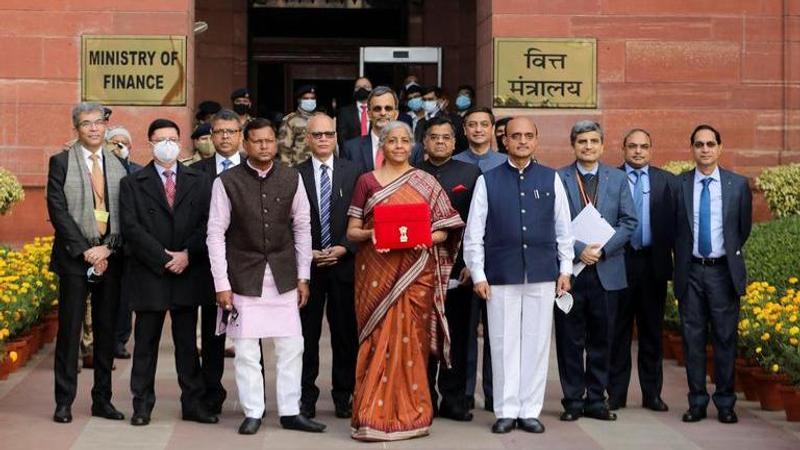Published 11:06 IST, February 2nd 2022
Union Budget 2022: Towards sustainable, structural & real growth
The Union Budget presented by Finance Minister Nirmala Sitharaman on Tuesday has set the tone for making India a globally competitive and advanced country.

Author of this article, Ashish Wakankar is founder of EquiPoise Capital Management Pvt. Ltd. Views expressed are personal.
Union Finance Budget 2022 was presented on February 1, 2022, by India’s Finance Minister Ms. Nirmala Sitharaman. From the market’s perspective, the two main expectations were one - no hike in taxes and two - 18-20% capital expenditure growth. On January 31, 2022, the Ministry of Finance presented the Economic Survey of India. This document in a way set the tone on the Government’s intent.
The Economic Survey advance estimates showed that economic growth remains strong at 9.2% in 2021-2022. Separately, IMF projections also point to 9% GDP growth in 2021 and again in 2022, making India the fastest growing economy in the world. With such strong growth and tax buoyancy, the government seems to have decided, unequivocally, to push growth further with the sole focus on the needs of the country over the next 25 years.
Let us look at some of the announcements in this Budget and analyse their impact:
Capital expenditure growth was expanded by 35.4% to Rs.7.50 lakh crore (Rs.7.5 trillion) in FY23 versus Rs.5.54 lakh crore (Rs..5.5 trillion) in FY22. FY22 Capex figures show a growth of 30% over FY21, which in turn is 27% higher than FY20 Capex. This shows sustained focus or preference on investment-led growth over consumption-led growth, the basic difference over the previous approaches, including those of developed economies.
You will recall that post-global financial crisis 2008, global central banks, including India’s, had got together and had given an economic stimulus which inspired consumption-led V shaped economic recovery. However, it was not sustainable, at least not in India, and what followed was a period of high inflation. This time around too, as a response to the COVID pandemic, globally economic stimulus was announced which was again meant to boost consumption-led economic revival.
The only difference this time was, India moved away as it had learnt from the previous experience. India decided to take the more painful or arduous part of investment-led economic revival. This choice meant that, unlike other global economies, India’s recovery would be delayed, and presented serious challenges regarding meeting expectations. While this was being done, the weaker and vulnerable sections of the society were ring-fenced, including ensuring food grains were delivered to individuals and emergency credit line guaranteed to MSMEs.
What we are witnessing right now are the benefits of this approach taken keeping the long-term interest of the country in mind. ECLGS (Emergency Credit Line Guarantee Scheme) has been expanded by Rs.50,000 crore to Rs.5 lakh crore (Rs.5 trillion) and extended till (Rs.500 billion) March 2023. This has been done keeping in mind the fact that the hospitality sector is still 8.5% below pre-Covid levels, and that MSMEs, in general, need support. The effort clearly is to take care of the vulnerable and marginal players.
The fiscal deficit for FY22 is marginally up from 6.8% to 6.9% and estimated at 6.4% in FY23. This again shows Government’s focus on investment-led growth, conservatism and realism. In a way, the government is being mindful that we are not fully out of COVID, plus global geopolitical challenges have emerged and globally, rate hikes cycle is about to start.
Throughout this budget, emphasis has been on further building infrastructure, urban mass transport, clean energy, digital economy, environment, highways, affordable housing, clean water, electric vehicles, battery swapping, e-vidya “One Class, One TV Channel”, digital rupee…to name a few. This document has set the stage for making India a globally competitive and advanced country.
While tax slabs and rates were left unchanged, what needs to be appreciated is the benefit that will accrue in terms of employment generation and, in turn, on consumption due to Govt’s focus on investment-led growth. Not only will the measures in this budget generate employment through infra build-up, but it will also result in efficiency gains, in rise in real wages thereby driving consumption… a virtuous, sustainable, structural cycle of real growth.
Author of this article, Ashish Wakankar is founder of EquiPoise Capital Management Pvt. Ltd. Views expressed are personal.
Updated 11:10 IST, February 2nd 2022




